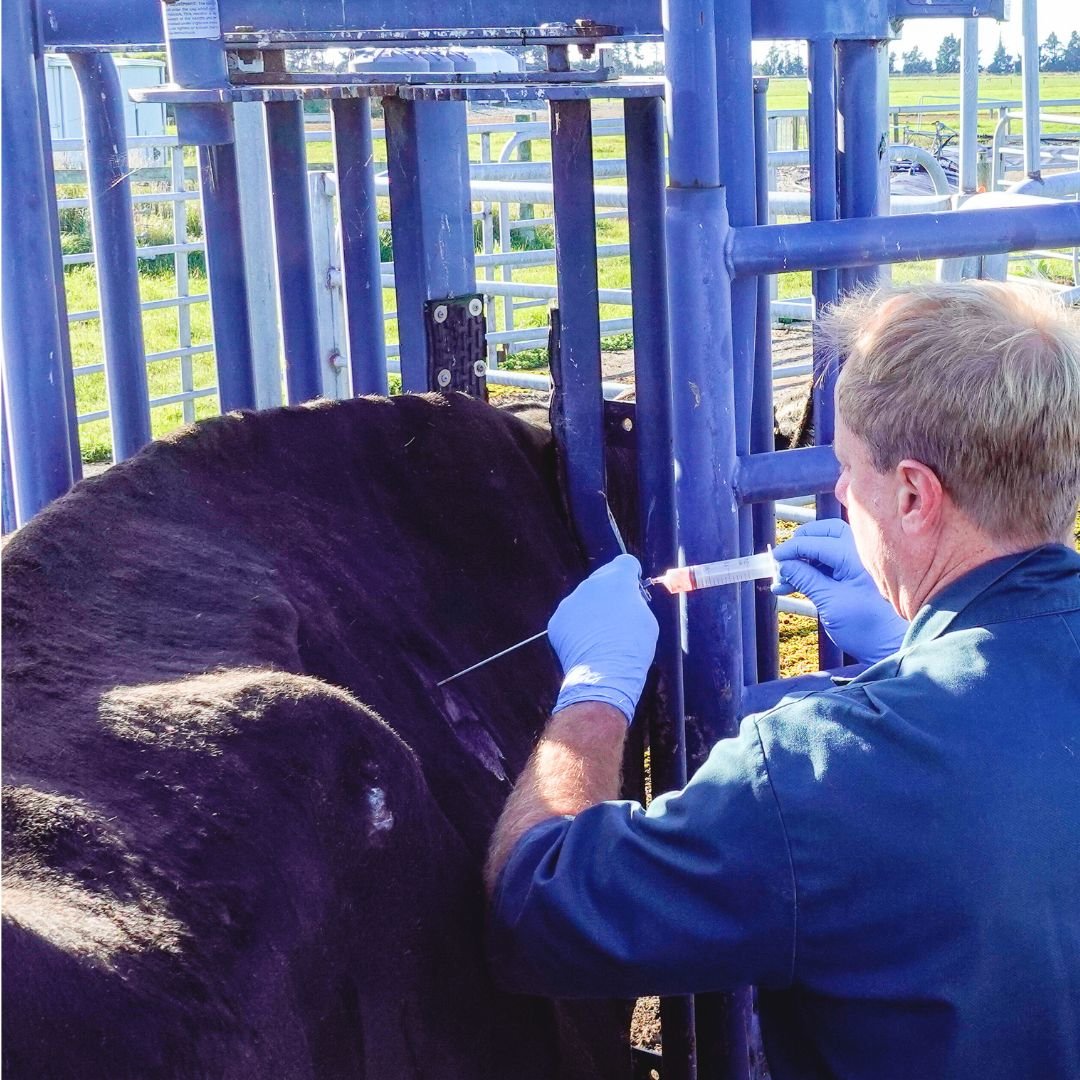Liver Biopsy in Cattle
Liver biopsy procedure performed by RVC’s large animal vet John Spearpoint.
A liver biopsy extracts a small amount of a cow’s liver tissue and is used for pro-active health monitoring of the herd.
Collecting samples of liver tissue is the most accurate means of evaluating the trace mineral status of an animal, especially for copper. While blood testing is easy and can be used to give an indication of the current circulating level of copper in the bloodstream, there is a poor correlation between the concentration of copper in blood compared to where it is stored in the liver. Copper levels within the blood generally do not decrease until levels with the “tank” – the liver, are nearly empty.
Why should we assess an animal’s copper level?
Copper is an essential trace mineral in ruminants, playing a vital role in the function of enzymes involved in hundreds of physiological processes, for example, growth, immune function, bone development, red blood cell manufacture, hair coat colour and energy manufacture.
A cow will have higher demands during pregnancy and early lactation and young cattle need sufficient copper for developmental processes. Copper levels will naturally decline over winter so a deficiency in copper can therefore result in reduced growth rates, reduced production, calf survival and fertility.
What is involved in a liver biopsy?
Lab results from liver biopsies on a dairy herd.
Cows tolerate the procedure very well and complications are rare. Local anaesthetic is strategically placed so the animal feels no pain when a small incision is made on the right hand side of the cow over the last couple of ribs. A biopsy needle is inserted through the muscle wall and a small sample is withdrawn with a biopsy instrument. Stitches are not required due to the small incision. Pain relief medication is given, and the cow quickly and comfortably returns to grazing. The liver sample is placed in a tube and sent to the veterinary diagnostic laboratory for analysis.
Knowing the trace mineral status of your animals will help to guide appropriate supplementation strategies and avoid unnecessary supplementation that can lead to toxicity.
WATCH: What happens during a liver biopsy? This video shows the procedure step-by-step with our Large Animal Vet John Spearpoint.



